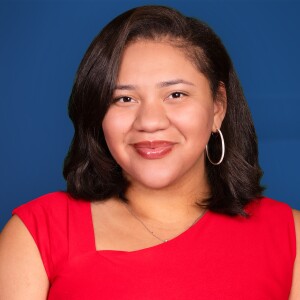WARRENSVILLE HEIGHTS, Ohio — Hundreds of elementary school kids from Warrensville and Bedford learned about different science experiments and how to stay safe during the historic solar eclipse on Monday.
The Center of Science and Industry, or COSI, taught the students how to make clouds, launch rockets and protect their eyes during the solar eclipse.
“What better way to communicate that message than as part of this historic moment. That won't happen again until 2099. So, this total solar eclipse is really going to be special for Cleveland, special for the state of Ohio and special for each of these youth that were participated today as well as their families,” said Chief strategy officer at COSI, Steven White.
White said the organization’s philosophy is science is everywhere for everyone, and it doesn’t matter what your background is, everyone should be able to participate in science.
“This moment in time, in two years, we are going to land the first woman and the first person of color on the moon. So, we need to inspire kids now to start thinking about for future generations that they too can be part of this historic moment and be part of the future of science as well,” said White.
Bedford fifth-grader Gabriella said her favorite part of the experience was learning how to make clouds and making postcards that would be sent into space.
“I was definitely surprised, seeing like all the science experiments that we were going to do, especially the rockets and the dried ice. I didn’t know much about UV light and dry ice, but now I know a lot,” said Gabrielle.
Heather Nelson is the director of the Club for the Future at Blue Origin, a non-profit that focuses on teaching underserved communities and underrepresented students about space.
Nelson said Blue Origin has been sending postcards to space for five years.
“We give it to our new shepherd team, they put it in the crew capsule, it gets launched into space, and then it comes back down. We stamp it flown in space, and then we mail it back to every single student, or if it's digital, we'll send you an email,” said Nelson.
Nelson said students have written poems, drew animals living in space and asked important questions like fifth grader Gabrielle.
“My question is how would you get the postcard to space and who will be reading the post card?,” said Gabrielle.
Nelson said their goal with these events is to show all students that space is for everyone.
The students also received a learning lunch box; Nelson said they will be able to take it to their families or communities and teach them about the solar system and make a replica of the solar eclipse.
Ruth Ray is the STEAM integration coordinator for Warrensville Heights School District. She said it is important for students to actually apply what they’re learning in the classroom.
"A lot of times, they don't even understand what's going on, but when you show them how you get there, what you can do when you get into the sky. When you bring those opportunities to scholars, it expands the opportunities not only for themselves but for their families and the generations to come,” said Ray.
Ray also said diversity is important in science because it inspires diverse communities to get more involved.
“The more they see each gender, each color, each community and cultures understand this as a common language. it will impact science in ways that we can never imagine, but we must continue to do things like this,” said Ray.
Blue Origin said it can’t give an exact timeline for when the postcards will be sent to space, but they confirmed they will be sent on one of their next missions.





